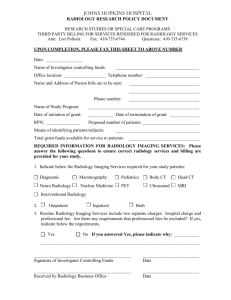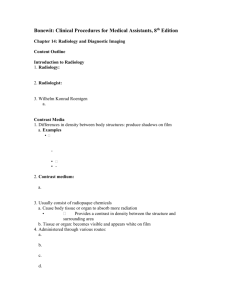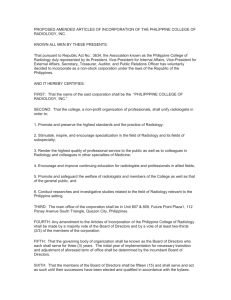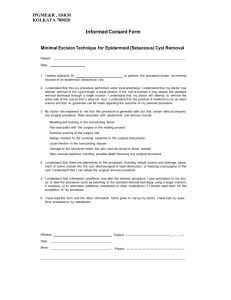benign non-odontogenic tumors
advertisement
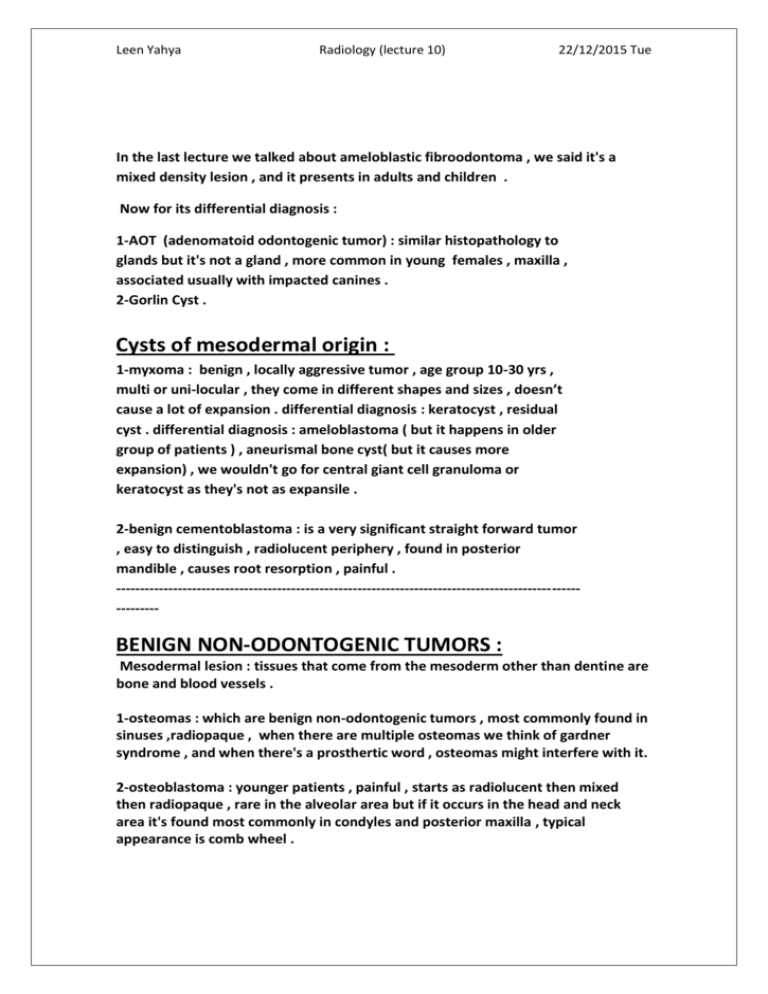
Leen Yahya Radiology (lecture 10) 22/12/2015 Tue In the last lecture we talked about ameloblastic fibroodontoma , we said it's a mixed density lesion , and it presents in adults and children . Now for its differential diagnosis : 1-AOT (adenomatoid odontogenic tumor) : similar histopathology to glands but it's not a gland , more common in young females , maxilla , associated usually with impacted canines . 2-Gorlin Cyst . Cysts of mesodermal origin : 1-myxoma : benign , locally aggressive tumor , age group 10-30 yrs , multi or uni-locular , they come in different shapes and sizes , doesn’t cause a lot of expansion . differential diagnosis : keratocyst , residual cyst . differential diagnosis : ameloblastoma ( but it happens in older group of patients ) , aneurismal bone cyst( but it causes more expansion) , we wouldn't go for central giant cell granuloma or keratocyst as they's not as expansile . 2-benign cementoblastoma : is a very significant straight forward tumor , easy to distinguish , radiolucent periphery , found in posterior mandible , causes root resorption , painful . ---------------------------------------------------------------------------------------------------------- BENIGN NON-ODONTOGENIC TUMORS : Mesodermal lesion : tissues that come from the mesoderm other than dentine are bone and blood vessels . 1-osteomas : which are benign non-odontogenic tumors , most commonly found in sinuses ,radiopaque , when there are multiple osteomas we think of gardner syndrome , and when there's a prosthertic word , osteomas might interfere with it. 2-osteoblastoma : younger patients , painful , starts as radiolucent then mixed then radiopaque , rare in the alveolar area but if it occurs in the head and neck area it's found most commonly in condyles and posterior maxilla , typical appearance is comb wheel . Leen Yahya Radiology (lecture 10) 22/12/2015 Tue 3-central hemangiomas : one of the most dangerous lesions , found in bone , radiolucent , if you take a biopsy without aspiration , severe bleeding happens, it causes widening of ID canal , and remodeling of the canal , it becomes tortuous . 4- Central giant cell granuloma (CGCG) : affects anterior mandible , young people ,radiolucent with wispy septa , it's a reactive non-odontogenic tumor . CRC Case 1 : it's a panoramic radiograph , multiple missing teeth , badly carious teeth , bilateral pneumatization of the sinus , a follow up radiograph was taken , and there was an oval well defined radiolucent lesion , between the roots of 3&4 , almost 4mm in diameter, not causing resorption or displacement of the associated teeth , the next step is to do a vitality test , if vital it's lateral periodontal cyst and if non vital it's a radicular cyst. The lesion is lingual according to the SLOB technique . Leen Yahya Radiology (lecture 10) 22/12/2015 Tue Case 2 : three radio graphs were taken 2009 , 2010 , 2011 , we can see the follicle of the third molar , there are odontomes (bilateral) in posterior maxilla. Leen Yahya Radiology (lecture 10) 22/12/2015 Tue Case 3 : it's apanoramic radiograph for a young patient , with well defined corticated radiolucent multilocular lesion on the right side of posterior mandible , the molars are displaced anteriorly , with little expansion , DDX : ameloblastic fibroma , CGCG , central hemangioma , if this appearance of the lesion was found in an older patient , we would say it's ameloblastoma . also we didn't go for keratocyst because we're dealing with a young patient , and we didn't go for simple bone cyst because the lesion caused expansion and it's multilocular . Leen Yahya Radiology (lecture 10) 22/12/2015 Tue Leen Yahya Radiology (lecture 10) 22/12/2015 Tue Case 4 : when you look at this patient, you'll think she's got class 3 skeletal relationship ,, but actually she wasn't born like this , in fact she developed this mass all of the sudden , in the panoramic radiograph , there's a well defined radiolucent multilocular lesion in anterior mandible , causing displacement of anterior teeth with root resorption , expansion and remodeling of bone, differential diagnosis could be : ameloblastoma ( the most common ) , myxoma , CGCG , glandular odontogenic cyst , Leen Yahya Radiology (lecture 10) 22/12/2015 Tue Leen Yahya Radiology (lecture 10) 22/12/2015 Tue Case 5 : it's a panoramic radiograph , there's a unilocular well defined radiolucent lesion in the ramus , extending to the condylar neck , there's displacement of the third molar , expansion and remodeling , differential diagnosis : ameloblastoma ( but mostly it's multilocular) , keratocyst ( even though it causes anterior-posterior expansion and not a lot of expansion but it eventually causes expansion) , not a dentigerous cyst because it doesn't extend from the CEJ to CEJ of the tooth . Leen Yahya Radiology (lecture 10) 22/12/2015 Tue case 6 : this is an axial cut of a CT scan , we can see that there's calcification of falx cerebri , in the second radiograph , we can see the ramus , teeth , and there are unilocular well defined radiolucent multiple lesions , causing displacement of teeth , differential diagnosis : keratocyst , buccal bifurcation . Leen Yahya Radiology (lecture 10) 22/12/2015 Tue Case 7 : young patient , failure of eruption of lower right 6 , so there's a well defined lesion , corticated , around the 6 , causing displacement, a little bit of expansion , differential diagnosis : dentigerous cyst ( however , it's larger than a dentigerous cyst ) , ameloblastic fibroma ( according to the age and appearance ) . Case 8 : it's a panoramic radiograph , for a completely edentulous mandible , there;s a well defined corticated lesion , extending from distal of 7 to the ramus , 3 cm in diameter , causing expansion of the anterior border of the ramus , a little bit of displacement of ID canal , it looks benign ( some benign lesions are locally aggressive) , what we found out that this patient had resection surgery of a keratocyst , and there was a recurrence . ( couldn't find the radiograph ) …

